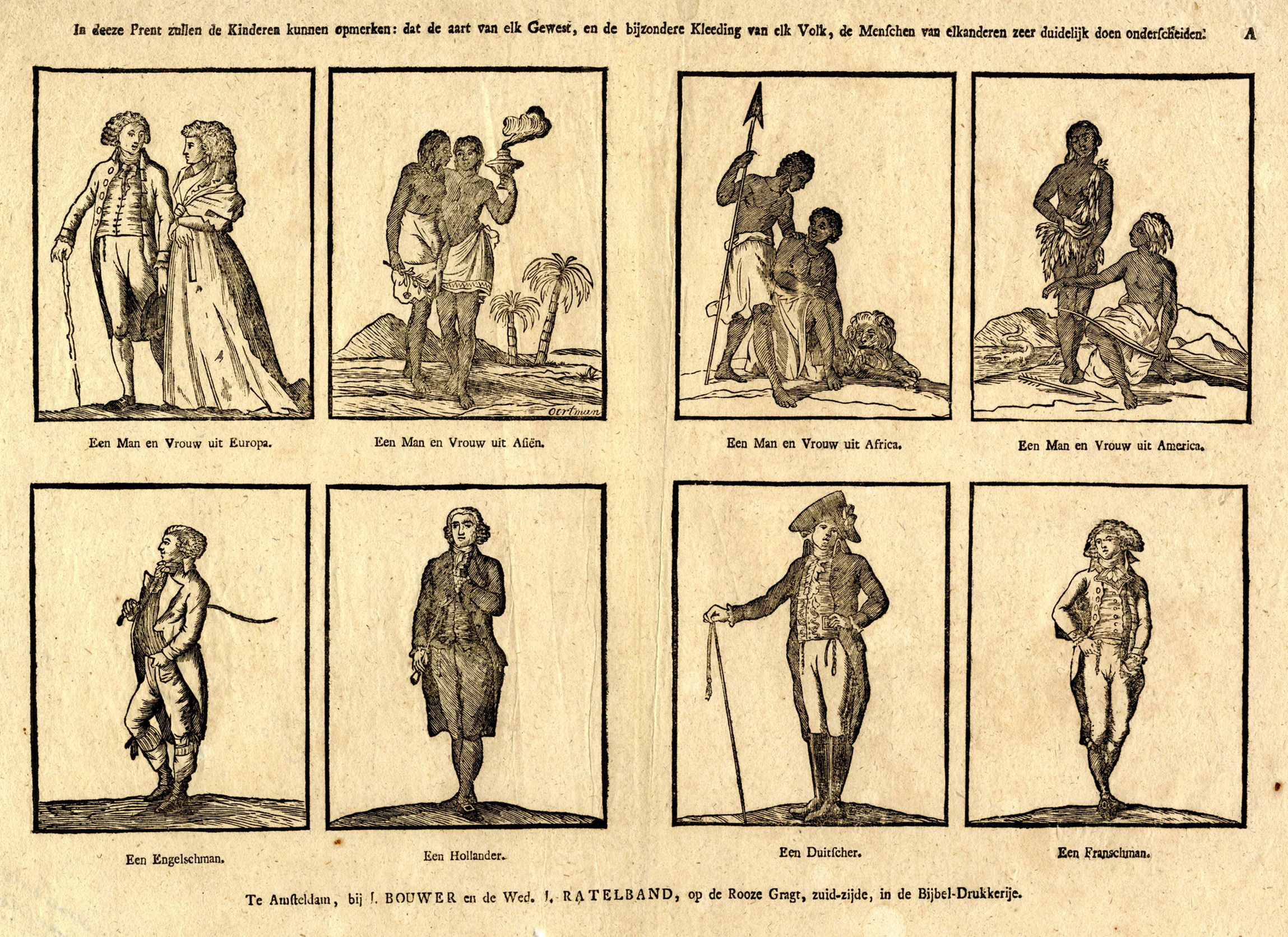|
Trait Ascription Bias
Trait ascription bias is the tendency for people to view ''themselves'' as relatively variable in terms of personality, behavior and mood while viewing others as much more predictable in their personal traits across different situations. More specifically, it is a tendency to describe one's own behaviour in terms of situational factors while preferring to describe another's behaviour by ascribing fixed dispositions to their personality. This may occur because peoples' own internal states are more readily observable and available to them than those of others. This attributional bias intuitively plays a role in the formation and maintenance of stereotypes and prejudice, combined with the negativity effect. However, trait ascription and trait-based models of personality remain contentious in modern psychology and social science research. Trait ascription bias refers to the situational and dispositional evaluation and description of personality traits on a personal level. A similar bi ... [...More Info...] [...Related Items...] OR: [Wikipedia] [Google] [Baidu] |
Personality
Personality is the characteristic sets of behaviors, cognitions, and emotional patterns that are formed from biological and environmental factors, and which change over time. While there is no generally agreed-upon definition of personality, most theories focus on motivation and psychological interactions with the environment one is surrounded by. Trait-based personality theories, such as those defined by Raymond Cattell, define personality as traits that predict an individual's behavior. On the other hand, more behaviorally-based approaches define personality through learning and habits. Nevertheless, most theories view personality as relatively stable. The study of the psychology of personality, called personality psychology, attempts to explain the tendencies that underlie differences in behavior. Psychologists have taken many different approaches to the study of personality, including biological, cognitive, learning, and trait-based theories, as well as psychodynamic, and hum ... [...More Info...] [...Related Items...] OR: [Wikipedia] [Google] [Baidu] |
Stereotype
In social psychology, a stereotype is a generalized belief about a particular category of people. It is an expectation that people might have about every person of a particular group. The type of expectation can vary; it can be, for example, an expectation about the group's personality, preferences, appearance or ability. Stereotypes are sometimes overgeneralized, inaccurate, and resistant to new information, but can sometimes be accurate. While such generalizations about groups of people may be useful when making quick decisions, they may be erroneous when applied to particular individuals and are among the reasons for prejudicial attitudes. Explicit stereotypes An explicit stereotype refers to stereotypes that one is aware that one holds, and is aware that one is using to judge people. If person ''A ''is making judgments about a ''particular'' person ''B'' from a group ''G'', and person ''A'' has an explicit stereotype for group ''G'', their decision bias can be partiall ... [...More Info...] [...Related Items...] OR: [Wikipedia] [Google] [Baidu] |
Naive Cynicism
Naivety (also spelled naïvety), naiveness, or naïveté is the state of being naive. It refers to an apparent or actual lack of experience and sophistication, often describing a neglect of pragmatism in favor of moral idealism. A ''naïve'' may be called a ''naïf''. Etymology In its early use, the word ''naïve'' meant "natural or innocent", and did not connote ineptitude. As a French adjective, it is spelled ''naïve'', for feminine nouns, and ''naïf'', for masculine nouns. As a French noun, it is spelled ''naïveté''. It is sometimes spelled "naïve" with a diaeresis, but as an unitalicized English word, "naive" is now the more usual spelling. "naïf" often represents the French masculine, but has a secondary meaning as an artistic style. “Naïve” is pronounced as two syllables, in the French manner, and with the stress on the second one. Culture The naïf appears as a cultural type in two main forms. On the one hand, there is 'the satirical naïf, such as Candid ... [...More Info...] [...Related Items...] OR: [Wikipedia] [Google] [Baidu] |
List Of Biases In Judgment And Decision Making
Cognitive biases are systematic patterns of deviation from norm and/or rationality in judgment. They are often studied in psychology, sociology and behavioral economics. Although the reality of most of these biases is confirmed by reproducible research, there are often controversies about how to classify these biases or how to explain them. Several theoretical causes are known for some cognitive biases, which provides a classification of biases by their common generative mechanism (such as noisy information-processingMartin Hilbert (2012) "Toward a synthesis of cognitive biases: How noisy information processing can bias human decision making"'. Psychological Bulletin, 138(2), 211–237; free access to the study here: https://www.martinhilbert.net/toward-a-synthesis-of-cognitive-biases/). Gerd Gigerenzer has criticized the framing of cognitive biases as errors in judgment, and favors interpreting them as arising from rational deviations from logical thought. Explanations include i ... [...More Info...] [...Related Items...] OR: [Wikipedia] [Google] [Baidu] |
Introspection Illusion
The introspection illusion is a cognitive bias in which people wrongly think they have direct insight into the origins of their mental states, while treating others' introspections as unreliable. The illusion has been examined in psychological experiments, and suggested as a basis for biases in how people compare themselves to others. These experiments have been interpreted as suggesting that, rather than offering direct access to the processes underlying mental states, introspection is a process of construction and inference, much as people indirectly infer others' mental states from their behaviour. When people mistake unreliable introspection for genuine self-knowledge, the result can be an illusion of superiority over other people, for example when each person thinks they are less biased and less conformist than the rest of the group. Even when experimental subjects are provided with reports of other subjects' introspections, in as detailed a form as possible, they still rate ... [...More Info...] [...Related Items...] OR: [Wikipedia] [Google] [Baidu] |
Illusory Superiority
In the field of social psychology, illusory superiority is a condition of cognitive bias wherein a person overestimates their own qualities and abilities, in relation to the same qualities and abilities of other people. Illusory superiority is one of many positive illusions, relating to the self, that are evident in the study of intelligence, the effective performance of tasks and tests, and the possession of desirable personal characteristics and personality traits. Overestimation of abilities compared to an objective measure is known as the overconfidence effect. The term ''illusory superiority'' was first used by the researchers Van Yperen and Buunk, in 1991. The phenomenon is also known as the above-average effect, the superiority bias, the leniency error, the sense of relative superiority, the ''primus inter pares'' effect, and the Lake Wobegon effect, named after the fictional town where all the children are above average. The Dunning-Kruger effect is a form of illusory ... [...More Info...] [...Related Items...] OR: [Wikipedia] [Google] [Baidu] |
Illusion Of Asymmetric Insight
The illusion of asymmetric insight is a cognitive bias whereby people perceive their knowledge of others to surpass other people's knowledge of them.. This bias "has been traced to people's tendency to view their own spontaneous or off-the-cuff responses to others' questions as relatively unrevealing even though they view others' similar responses as meaningful". Study A study finds that people seem to believe that they know themselves better than their peers know themselves and that their social group knows and understands other social groups better than other social groups know them. For example: Person A knows Person A better than Person B knows Person B or Person A. This bias may be sustained by a few cognitive beliefs, including: *The personal conviction that observed behaviors are more revealing of other people than of the self, while private thoughts and feelings are more revealing of the self. *The more an individual perceives negative traits ascribed to someone else, the m ... [...More Info...] [...Related Items...] OR: [Wikipedia] [Google] [Baidu] |
Fundamental Attribution Error
In social psychology, fundamental attribution error (FAE), also known as correspondence bias or attribution effect, is the tendency for people to under-emphasize situational and environmental explanations for an individual's observed behavior while overemphasizing dispositional- and personality-based explanations. This effect has been described as "the tendency to believe that what people do reflects who they are", that is, to overattribute their behaviors (what they do or say) to their personality and underattribute them to the situation or context. The error is in seeing someone's actions as ''solely'' reflective of their personality rather than ''somewhat'' reflective of it and also largely prompted by circumstances. It involves a type of circular reasoning in which the answer to the question "why would they do that" is only "because they ''would'' do that." Although things like personality differences and predispositions are in fact real, the fundamental attribution error is a ... [...More Info...] [...Related Items...] OR: [Wikipedia] [Google] [Baidu] |
Forer Effect
The Barnum effect, also called the Forer effect or, less commonly, the Barnum–Forer effect, is a common psychological phenomenon whereby individuals give high accuracy ratings to descriptions of their personality that supposedly are tailored specifically to them, yet which are in fact vague and general enough to apply to a wide range of people. This effect can provide a partial explanation for the widespread acceptance of some paranormal beliefs and practices, such as astrology, fortune telling, aura reading, and some types of personality tests. These characterizations are often used by practitioners as a con-technique to convince victims that they are endowed with a paranormal gift. Because the assessment statements are so vague, people ascribe their own interpretation, thus the statement becomes "personal" to them. Also, individuals are more likely to accept negative assessments of themselves if they perceive the person presenting the assessment as a high-status professiona ... [...More Info...] [...Related Items...] OR: [Wikipedia] [Google] [Baidu] |
Cognitive Bias
A cognitive bias is a systematic pattern of deviation from norm or rationality in judgment. Individuals create their own "subjective reality" from their perception of the input. An individual's construction of reality, not the objective input, may dictate their behavior in the world. Thus, cognitive biases may sometimes lead to perceptual distortion, inaccurate judgment, illogical interpretation, or what is broadly called irrationality. Although it may seem like such misperceptions would be aberrations, biases can help humans find commonalities and shortcuts to assist in the navigation of common situations in life. Some cognitive biases are presumably adaptive. Cognitive biases may lead to more effective actions in a given context. Furthermore, allowing cognitive biases enables faster decisions which can be desirable when timeliness is more valuable than accuracy, as illustrated in heuristics. Other cognitive biases are a "by-product" of human processing limitations, resulting ... [...More Info...] [...Related Items...] OR: [Wikipedia] [Google] [Baidu] |
Bounded Rationality
Bounded rationality is the idea that rationality is limited when individuals make decisions, and under these limitations, rational individuals will select a decision that is satisfactory rather than optimal. Limitations include the difficulty of the problem requiring a decision, the cognitive capability of the mind, and the time available to make the decision. Decision-makers, in this view, act as satisficers, seeking a satisfactory solution, with everything that they have at the moment rather than an optimal solution. Therefore, humans do not undertake a full cost-benefit analysis to determine the optimal decision, but rather, choose an option that fulfils their adequacy criteria. An example of this being within organisations when they must adhere to the operating conditions of their company, this has the opportunity to result in bounded rationality as the organisation is not able to choose the optimal option. Some models of human behavior in the social sciences assume that hu ... [...More Info...] [...Related Items...] OR: [Wikipedia] [Google] [Baidu] |
Availability Heuristic
The availability heuristic, also known as availability bias, is a mental shortcut that relies on immediate examples that come to a given person's mind when evaluating a specific topic, concept, method, or decision. This heuristic, operating on the notion that, if something can be recalled, it must be important, or at least more important than alternative solutions not as readily recalled, is inherently biased toward recently acquired information. The mental availability of an action's consequences is positively related to those consequences' perceived magnitude. In other words, the easier it is to recall the consequences of something, the greater those consequences are often perceived to be. Most notably, people often rely on the content of their recall if its implications are not called into question by the difficulty they have in recalling it. Overview and history In the late 1960s and early 1970s, Amos Tversky and Daniel Kahneman began work on a series of papers examining "heur ... [...More Info...] [...Related Items...] OR: [Wikipedia] [Google] [Baidu] |



_(cropped).jpg)